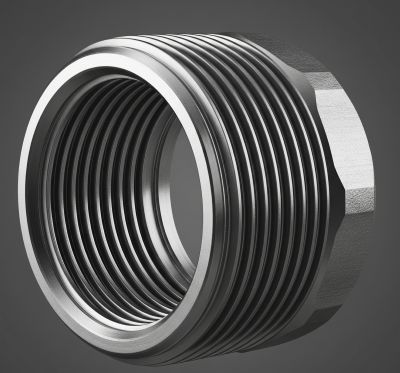When working with plumbing systems, choosing the right pipe threads is crucial to ensure a leak-free, secure connection. One of the most common points of confusion is the difference between FIP and FPT threads. These terms often appear on fittings, product listings, and technical documentation, yet their meanings can seem interchangeable—or worse, unclear.
This article will clarify the difference between FIP (Female Iron Pipe) and FPT (Female Pipe Thread) to help you confidently choose the right fitting for your plumbing or piping project.
What Is FIP (Female Iron Pipe)?
FIP stands for Female Iron Pipe, a type of internal threading commonly used in plumbing systems. “Female” indicates that the threads are located inside the fitting, allowing a corresponding male-threaded pipe or fitting to screw into it.
FIP threads follow the NPT (National Pipe Thread) standard, which is the most common threading system used in North America. These are tapered threads designed to create a tight seal when torqued correctly, usually with the help of thread sealant like Teflon tape.
Common Applications
FIP threads are found in a variety of systems, including:
1. Household plumbing connections
2. Water heaters
3. Faucets and valves
4. Irrigation systems
These fittings are typically made from brass, galvanized steel, or PVC, depending on the application.
What Is FPT (Female Pipe Thread)?
FPT stands for Female Pipe Thread. Like FIP, it also refers to internal threads designed to receive a male-threaded connection. The key difference? There really isn’t one.
FPT and FIP are often used interchangeably. Both refer to female, internally threaded pipe fittings that conform to the NPT standard. Some manufacturers or industries prefer one term over the other, but they are functionally the same.
Typical Use Cases
Just like FIP, FPT fittings are commonly used in:
1. Plumbing
2. Gas lines
3. Industrial piping
4. DIY projects requiring secure connections
Are FIP and FPT the Same Thing?
Yes, in most cases, FIP and FPT mean the same thing: a female NPT-threaded fitting. They are simply different terms used by different manufacturers or sectors.
➡️ “FIP” is more common in residential plumbing and retail settings
➡️ “FPT” is often used in engineering specs or industrial documentation
When Does It Matter?
It usually doesn’t matter unless you’re reading a specific specification or ordering components that require precision labeling. Always double-check the full description, especially if the component will be used in high-pressure or gas systems.
Common Use Cases and Compatibility
Plumbing (Residential and Commercial)
FIP/FPT fittings are used for connecting:
1. Faucets
2. Water heaters
3. Pressure regulators
4. Pipe nipples
Gas and Hydraulic Systems
In gas lines or hydraulic systems, accurate thread matching is critical for preventing leaks. FIP/FPT fittings are often paired with MIP (Male Iron Pipe) or MPT (Male Pipe Thread) ends.
Tips for Matching Threads
➡️ FIP/FPT = Female internal threads
➡️ MIP/MPT = Male external threads
➡️ Always match FIP/FPT with a male NPT fitting
Thread Sealing Tips
Use Teflon tape or pipe joint compound on male threads before tightening to ensure a leak-proof connection.
Buyer’s Guide: Choosing the Right Thread
Key Factors to Consider
➡️ Material compatibility (brass, PVC, steel, etc.)
➡️ Operating pressure and temperature
➡️ Corrosion resistance
➡️ Thread size (measured in inches, not diameter)
Avoiding Mismatched Connections
➡️ Never force incompatible threads together
➡️ Stick to NPT-standard fittings when working with FIP/FPT
Understanding Product Labels
Retail and online listings may label fittings as:
➡️ “½” FIP brass elbow”
➡️ “¾” FPT PVC tee”
These are essentially the same, just be sure they match your existing components.
FAQs
Can you use FIP with MPT?
Yes, that’s exactly what they’re made for—FIP (female) threads receive MPT (male) threads to create a secure NPT connection.
Are FIP and NPT the same?
FIP fittings use NPT threads, but “FIP” refers to the gender and type of the fitting (female iron pipe), while “NPT” is the thread standard itself.
How do you measure FIP threads?
Measure the inner diameter of the fitting or refer to the nominal pipe size (e.g., ½”, ¾”). Always match this with the corresponding male fitting.
Do I need a thread sealant?
Yes. For most applications, use Teflon tape or pipe thread compound to ensure a tight, leak-free seal on NPT threads.
Conclusion
Understanding the difference—or lack thereof—between FIP and FPT can save time, money, and frustration during your plumbing or piping project. These terms are used interchangeably and both refer to female NPT-threaded fittings.
As long as you’re matching thread types properly and using thread sealant where needed, you can confidently use either FIP or FPT fittings in your system.
Always check thread specifications before purchasing or installing fittings to ensure compatibility and safety.
Post time: Jul-03-2025



